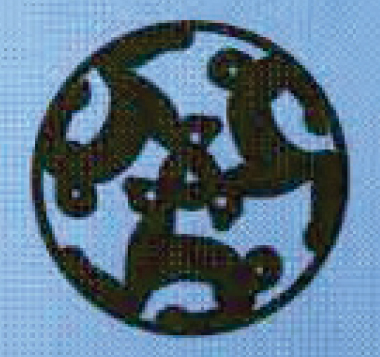




This ornamental pattern is one of the visual projections of the sun sign, associated with the source of life, a constant cycle and endless movement in nature. The motif can appear in different variations.
Light as such belongs to the universal values of world culture, ontologically it is the substance of all things, gnoseologically it is the principle of knowledge, aesthetically it is the essence of beauty, and existentially it is spiritual/divine.
It is closely related to the concept of “holiness” (awliye) and is also an attribute of truth in Islam and symbolises knowledge in the Sufi tradition.
In Kazakh culture, nur/light is used in wishes for good luck and prosperity (“Nūr zhausyn!”, “Nūr üstine nūr!”, etc.), in reference to the characteristics of a person’s image (“zhüzi nūrly – zhüzi zharkyn, zhyli, shyraily” – radiating light, shining), in personal names or in the formation of compound Kazakh names (female and male), in the description of a person’s inner state (“betinen nūry qashty” – “he has changed in his face”), etc. In Kazakh culture, the pattern “kün nūry” more often decorates the main field of composition of felted and embroidered carpets, most likely related to the organisation of the Middle World in the traditional tripartite structure of the world. Probably, the pattern is associated with good wishes, luck, light and so on.
In the hierarchy of “solar” patterns, the “kün közі” occupies a special place and is one of the most popular patterns in the world culture. Its original meaning in world culture goes back to the understanding of the eye of God (the all-seeing eye): the eye of Horus (Horus) in Egyptian mythology; the eye of providence enclosed in a triangle, symbolising the Trinity, etc.). The sign is associated with secret knowledge, wisdom and spiritual insight.
This sign was mainly used to protect against dark forces and to cure diseases, which is why it was placed on many ritual objects and amulets.
The “kün közi” pattern is quite a popular motif in Kazakh applied arts. It is often found on clothes, textiles, etc. It has several variations and its semantics is similar to the “kün saulesi” (sunbeam) pattern.


